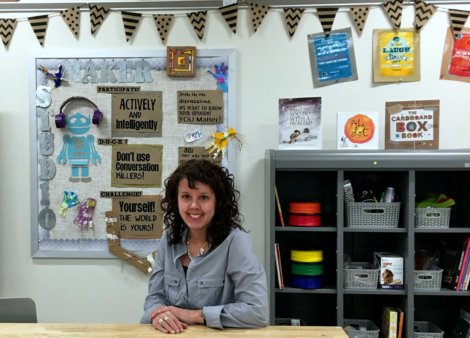
Guest Blogger Laura Brown – Reflections on Science Education in Shanghai
Posted by Andrew Gardner on
With all the buzz at BrainPOP about the STEM video game challenge and this week’s Global Education Conference, today we welcome Guest Blogger Laura Brown. Laura is an expatriate science teacher working in Shanghai at Concordia International School. Recently selected as an Apple Distinguished Educator and member of the Learning 2.0 Asia Technology Conference executive committee, Laura is passionate about sharing her experiences in using technology in the classroom and assisting other educators to explore its ability to enrich and deepen student learning for a more authentic understanding.
Most people are well aware of the significant differences between western-style teaching methodologies and a traditional Chinese classroom. The large class sizes, lack of interactive and engaging learning activities, and the broadcast teaching approach, not only limits a student’s ability to think flexibly, it also does not fully meet all students learning styles and many are subsequently left behind.
The Shanghai Education Bureau has recently observed trends that suggest, despite what many would think, the average Chinese student’s understanding of, and ability to apply scientific concepts, is lower than the equivalent age student studying in a western-style classroom. The Bureau has since established a program for International Collaborative Research on Using Multimedia in Science Education, of which BrainPOP is heavily involved.
My role in assisting the Bureau in their push for a shift in the way science is taught, was to invite passionate Chinese teachers in Shanghai to observe a modeled lesson incorporating a range of different technologies, including BrainPOP, designed to engage and extend the thinking and learning of science students.
The modeled lesson was geared at the process of photosynthesis and its role in the transfer and transformation of energy from the Sun, to its use as electrical or chemical energy in the home. Having previously considered the Law of Conservation of Energy, the class worked together to create an interactive flow chart on the SMART board showing the various energy transformations that exist between the Sun and the light bulb. The importance of photosynthesis was recognized and the BrainPOP clip “Photosynthesis: There’s nothing more fun than watching plants eat” was used to introduce the concept. I had the students watch the clip twice. The first time they were to record as many key words as they could. With some discussion of the terms identified, the kids were able to develop a table to assist them in obtaining additional information when watching the BrainPOP for the second time. I personally love this technique as it forces students to view the clip initially as an overview, establishing the purpose, and secondly, addressing an understanding of the concept.
I have used BrainPOP in a variety of different manners: An introductory, summary or revision piece; an appealing way for students to take a set of notes; as additional support for struggling students or extending the learning needs of others; and as a means for revision using quizzes, either individually or as a class.
In order to formatively assess the student’s learning, I had them create an interactive mural showing their understanding of the process of photosynthesis. This digital learning object (featured in the photograph above) can be found here. Reflecting on these murals, proved successful in making decisions upon the direction for future teaching and learning.
More recently, I have discovered the powerful use of animation in the science classroom and its ability to really ‘see’ into the students thinking behind scientific concepts. Animation has allowed me to view student learning from an entirely new angle and to empower them to recognize appropriate means of presenting their knowledge and understanding in a way that they can effectively communicate with a diverse audience. So give it a go – animate the classroom!
It is my hope that through my involvement in this program, I have, and will continue to play, a role in contributing to a shift in thinking toward science education, in China. In short, students throughout the world should be empowered to work toward being technology and media literate within a global communications environment. This mindset drives the decisions I make as an educator.














